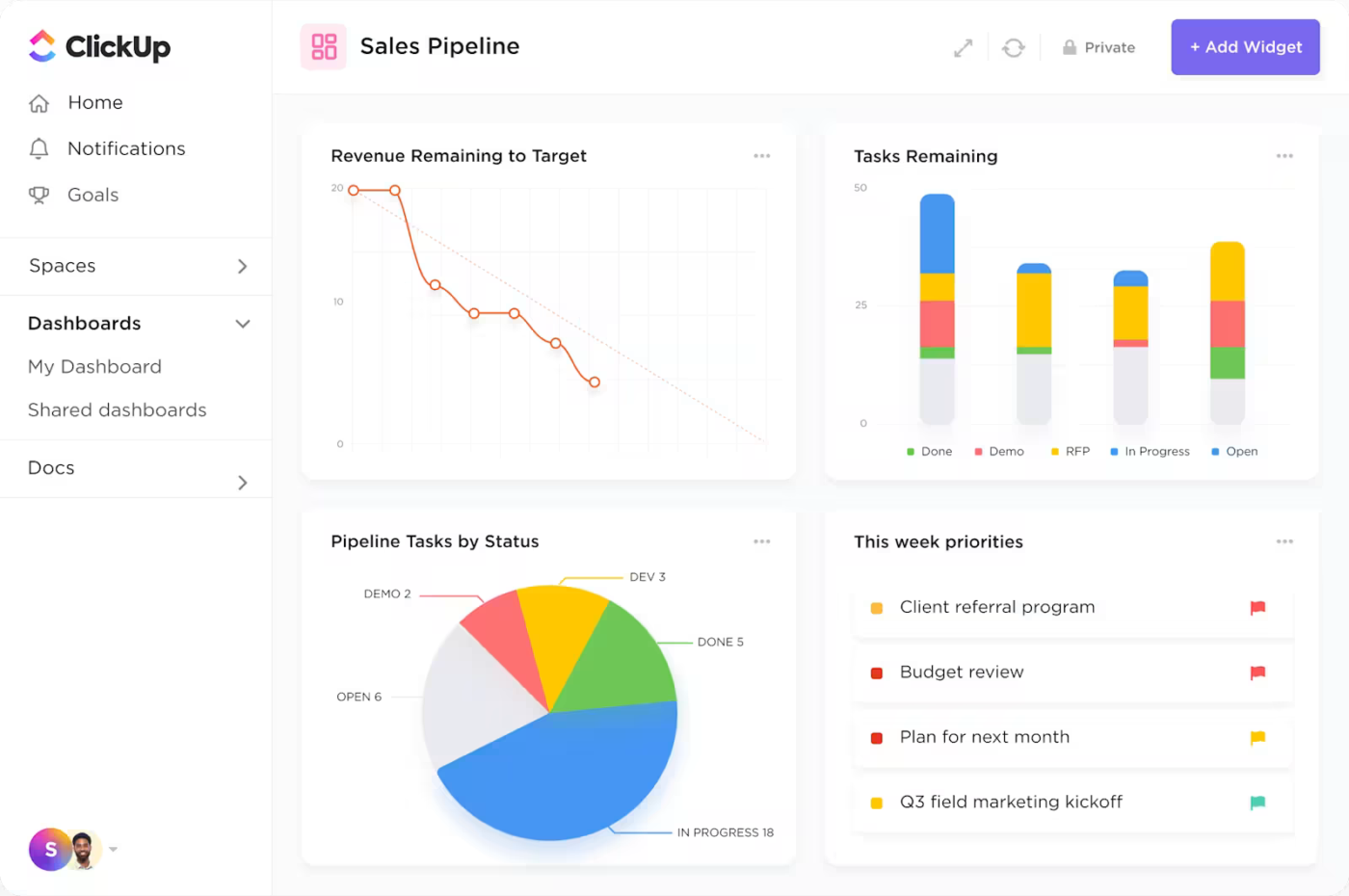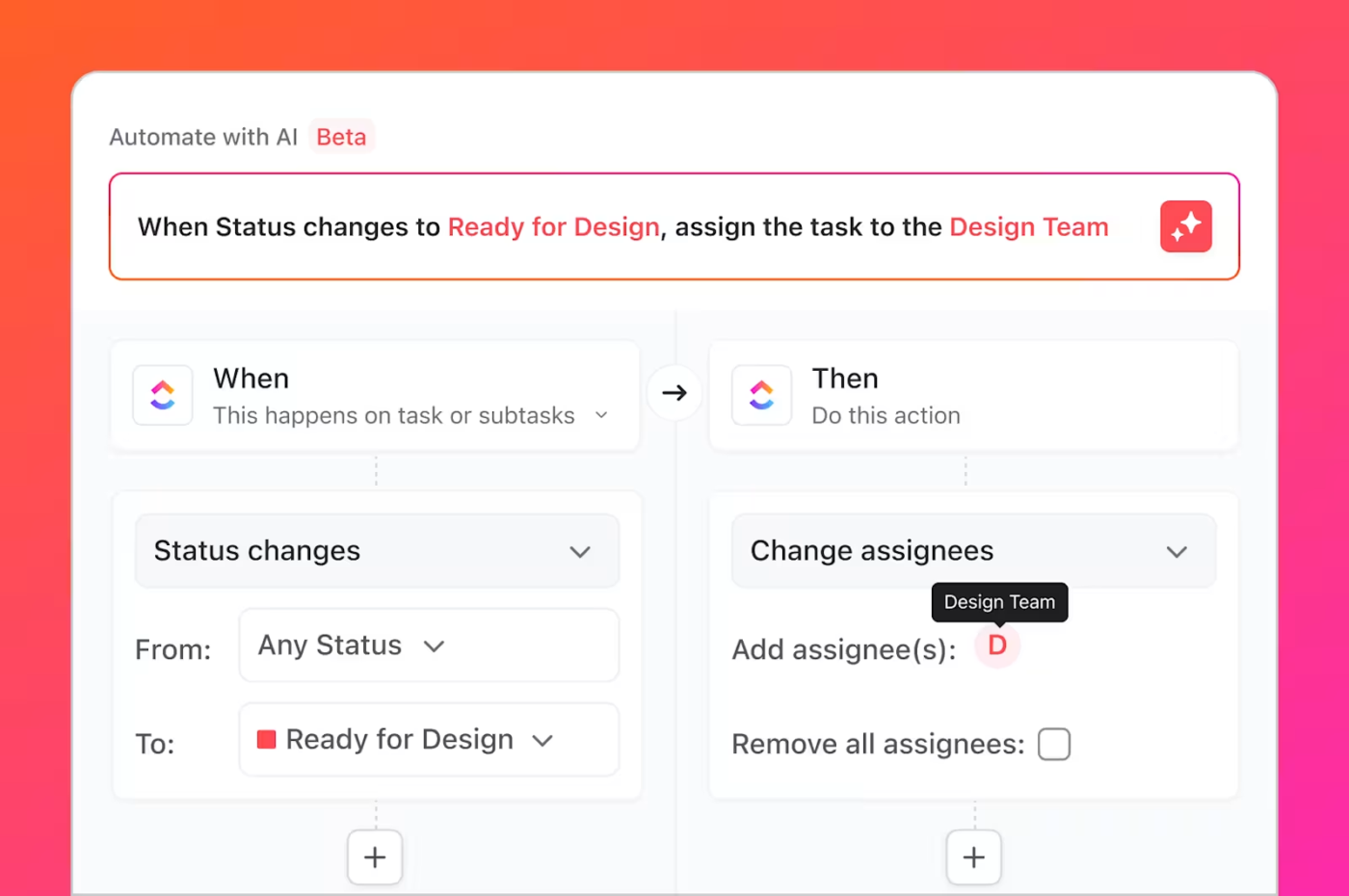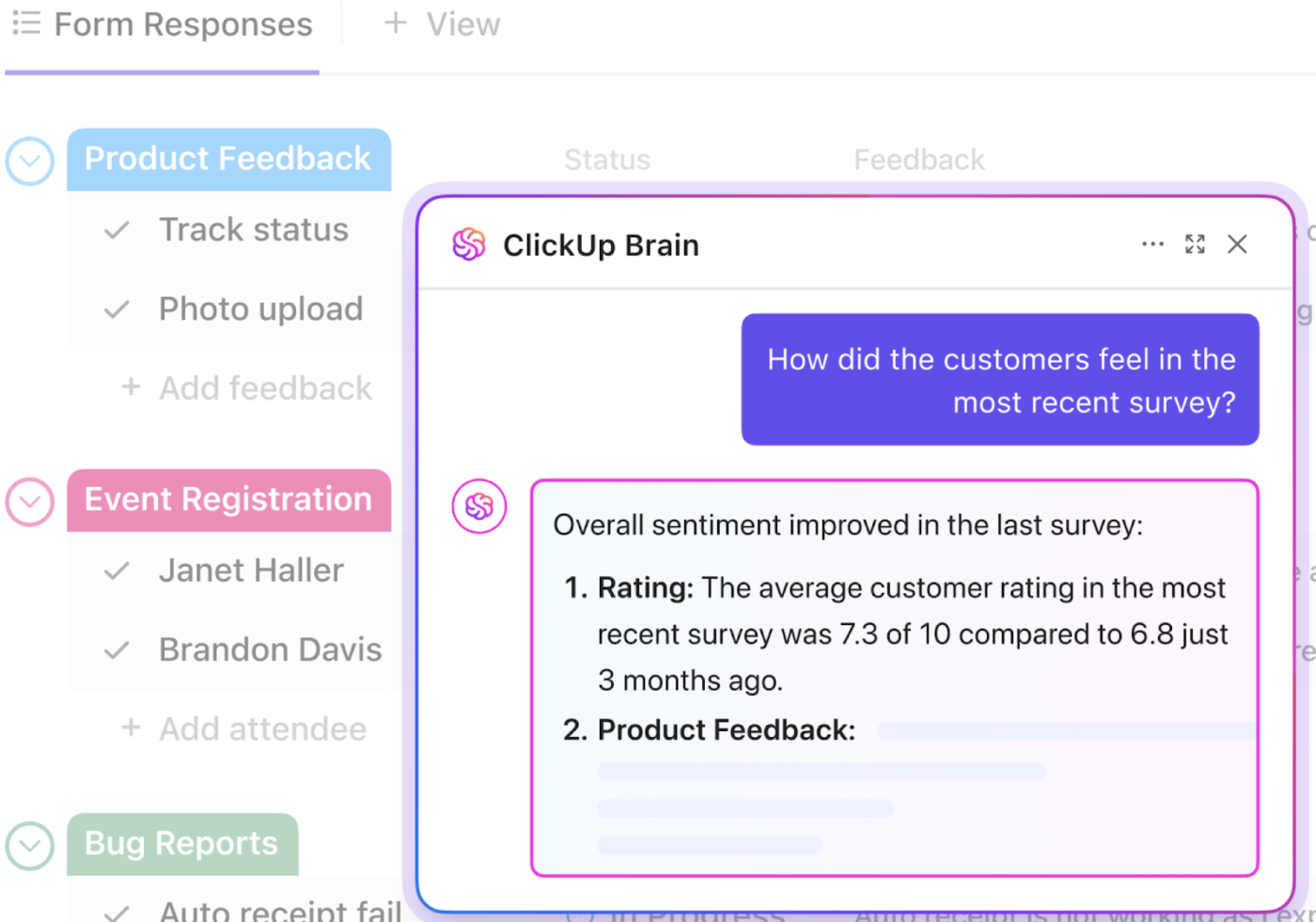How to Break Down Marketing Silos to Improve Collaboration & Efficiency

Sorry, there were no results found for “”
Sorry, there were no results found for “”
Sorry, there were no results found for “”

Marketing teams are supposed to work together. But that’s often not the case.
You know the symptoms: your sales team doesn’t understand what marketing is promoting. The content team creates assets the paid media team never uses. Your data lives in multiple systems that don’t talk to each other. And customers experience a disjointed journey that undermines your brand promise.
The problem isn’t a lack of talent or effort. It’s the way teams are structured. When content, demand gen, and sales ops function independently, valuable insights get trapped, and marketing effectiveness suffers.
52.2% of sales professionals believe the biggest impact of misaligned sales and marketing teams is lost sales and revenue.
But there’s a better way. When marketing teams work in sync, they see stronger collaboration, faster deal closures, and more revenue growth compared to fragmented teams. In this guide, we’ll walk through the causes of such disconnect, their impact, and actionable strategies for breaking down marketing silos—to create a more connected, high-performing marketing team.
Marketing silos happen when different teams—like content, demand gen, social, and sales—work in isolation instead of as a unified force. These disconnected units develop their own processes, goals, and sometimes even competing priorities.
Marketing silos rarely form intentionally. They usually stem from:
If you get more than three marketing people in a room, you get silos…You lose the connective tissue, and customers pick up on things.
At first, silos might not seem like a big deal. But over time, they create bottlenecks, slow down execution, and make it harder to generate leads and measure marketing’s true impact. The business costs of siloed marketing are substantial:
It’s no wonder that breaking down these barriers goes beyond merely improving collaboration.
38.3% of sales leaders cite better alignment on goals and strategy as their top priority from their marketing teams.
When you successfully tear down the walls between your marketing functions, your entire marketing ecosystem transforms.
You’ll notice faster time to market for key initiatives as approval bottlenecks disappear and ideas flow freely between specialists. Your budget will start to stretch further as you eliminate redundant tools and duplicated efforts that were previously hidden in departmental corners.
Most importantly, your customers experience a coherent brand journey regardless of which channels they engage with. When your social media voice aligns with your email marketing tone, which reinforces your website messaging, customers develop deeper trust in your brand. This consistency translates directly to higher conversion rates and increased lifetime value.
22.1% of salespeople believe the biggest benefit of greater alignment between sales and marketing teams is that it helps them close more deals.
When HubSpot discovered their clients were unhappy because of a substantial gap between promised services and actual delivery, Mike Volpe, their former CMO, saw this as an opportunity to reimagine the marketing department fundamentally.
Instead of organizing teams around traditional marketing channels or touchpoints, HubSpot structured teams based on different stages of the customer lifecycle. This meant physically changing how teams were located within the office.
“We’ll have the sales and customer service teams sit together,” Volpe explained. “We structure based on what stage of the customer lifecycle each team is addressing, rather than touch points or channels. People sit according to different customers’ personas.”
The motivation was to eliminate the common frustration of disjointed customer experiences, in which customers had to repeatedly explain their situation to different representatives who lacked context from previous interactions.
The results were significant. Customer satisfaction increased substantially, renewal rates improved, and the company continued growing at a 50% rate. Volpe noted that the customer experience with HubSpot became much less fragmented.
You already know those marketing silos aren’t doing your team any favors. They’re holding you back.
If you want a marketing team that runs like a well-oiled machine—where insights flow freely, campaigns align, and no one’s duplicating work—you need to break down the barriers between teams.
Let’s discuss practical strategies to make that happen.
Start by taking a hard look at your team’s communication patterns. Are your content creators ever in the same room as your PPC specialists? When was the last time your social media manager had coffee with someone from sales? Silos thrive in silence.
Try these approaches to encourage structured, ongoing communication:
📮 ClickUp Insight: About 41% of professionals prefer instant messaging for team communication. Although it offers quick and efficient exchanges, messages are often spread across multiple channels, threads, or direct messages, making it harder to retrieve information later.
With an integrated solution like ClickUp Chat, your chat threads are mapped to specific projects and tasks, keeping your conversations in context and readily available.
💡Pro Tip: Instead of updating multiple static spreadsheets to track marketing projects and performance, use ClickUp’s Marketing Teams Template to break big campaigns down into manageable tasks, share assets across cross-functional teams, and align deliverables.
Your team shouldn’t have to dig through five different marketing tools to find the latest campaign performance data. Standardize file storage. If creatives live in Drive, paid media in Dropbox, and sales decks in a random email thread…you’ve got a problem. Consolidate assets in one place so no one wastes time searching.
Moreover, a single source of truth is non-negotiable. For most sales and marketing teams, this happens to be their CRM system.
79% of sales professionals say their CRM improves their sales and marketing alignment.
ClickUp’s CRM helps eliminate marketing silos by giving teams one shared workspace to track leads, collaborate on deals, and align on revenue goals. Instead of marketing, sales, and customer success working in disconnected tools, ClickUp consolidates lead details, interaction history, and deal stages in one place. Every update—whether from marketing nurturing a lead or sales closing a deal—is visible in real time, so no one operates in the dark.

ClickUp’s Custom Fields let teams categorize leads by source, campaign, engagement level, or any other relevant factor. This helps marketing understand which channels drive the best leads and allows sales to prioritize high-value opportunities.
👉 Example: Marketing can filter leads by “Campaign Source” to see which ones came from LinkedIn ads versus organic search, helping refine future ad spend.
Plus, you don’t need any more spreadsheets or Slack messages to pass leads between teams. You can build custom ClickUp Automations to ensure that when a lead meets a qualification threshold (e.g., downloads an eBook, attends a demo), it automatically gets assigned to a sales rep with all relevant details.

Instead of manually pulling reports from multiple tools or needing a full-fledged data warehouse, ClickUp Dashboards provide instant insights into lead conversion rates, pipeline velocity, and marketing-sourced revenue. This means marketing and sales teams can track shared KPIs and adjust strategies on the fly.

🤝 Friendly Reminder: You’d be shocked how many marketers are paying for multiple tools that do essentially the same thing because different teams purchased them independently. Map your martech stack and eliminate redundant tools. If your CRM doesn’t talk to your email marketing platform, automation tool, or ad tracking system, your data will always be incomplete.
By breaking down data silos, automating handoffs, and making collaboration seamless, ClickUp CRM ensures that marketing and sales work as a unified team—resulting in faster deal cycles, better customer experiences, and higher revenue.
📮 ClickUp Insight: Low-performing teams are 4 times more likely to juggle 15+ tools, while high-performing teams maintain efficiency by limiting their toolkit to 9 or fewer platforms. But how about using one platform?
As the everything app for work, ClickUp brings your tasks, projects, docs, wikis, chat, and calls under a single platform, complete with AI-powered workflows. Ready to work smarter? ClickUp works for every team, makes work visible, and allows you to focus on what matters while AI handles the rest.
📖 Also Read: How to Develop a Sales and Marketing Strategy
Misaligned goals are the root of most marketing silos. Your teams might be working hard, but if they’re working toward different objectives, achieving true collaboration will be next to impossible.

💡 Pro Tip: Implement ClickUp’s Strategic Marketing Plan Template to get everyone aligned around common objectives. This ready-to-use template helps you visualize how each team’s efforts contribute to overarching goals, turning fragmented efforts into coordinated action.
Think AI in marketing is only for generating ad copy? You’ll be surprised how effectively it powers automation for breaking down silos. When done right, AI-powered automation eliminates busy work, speeds up processes, and ensures teams are working with the most up-to-date information.
Here’s how to make the most of marketing automation platforms:


🤝 Friendly Reminder: Breaking down marketing silos isn’t a one-and-done fix. It takes intentional effort, better processes, and the right tools. But once your teams are aligned, you’ll move faster, work smarter, and drive real business impact from your marketing operations.
Next, let’s talk about how to measure success and keep improving throughout the process.
📖 Also Read: A Day in the Life of a Marketing Manager
You can’t improve what you don’t measure—and dismantling marketing silos is no exception. Let’s look at concrete ways to track your progress and ensure those walls stay down for good.
Start with baseline measurements before you implement any changes. How long does it currently take for campaigns to move from concept to launch? How many handoffs occur between teams? What percentage of assets created actually get used? Document these metrics now so you can demonstrate real improvement later.
Don’t forget to benchmark performance against past quarters to see how alignment is improving over time.
Cross-team collaboration metrics reveal how well your teams are actually working together:
Customer journey coherence shows if your marketing appears unified from the outside:
Operational efficiency indicators prove that breaking down silos delivers tangible business benefits:
🔑 Finally, monitor whether marketing and sales alignment efforts are translating to a higher percentage of closed deals. That’s the ultimate indicator that silos are coming down.
ClickUp’s Custom Fields and reporting features make tracking these metrics straightforward.
Create Custom Fields for “originated in department” and “utilized by department” to track how assets flow between teams. Then use ClickUp Dashboards to visualize this flow, instantly spotting bottlenecks or departments that aren’t sharing resources effectively.
Set up weekly automated reports using AI Custom Fields showing cross-team dependencies and completion rates. You’ll quickly see if certain teams consistently miss deadlines that affect others or if some departments are naturally more adept than others at collaboration.

You can even use ClickUp’s Time Tracking features to measure how long handoffs between teams actually take, then set progressive benchmarks for improvement if simple handoffs sit in queues for days.
💡 Pro Tip: Remember, improvement should be iterative. Don’t expect perfection immediately—instead, celebrate incremental wins and use data to identify the next most impactful area to tackle. When teams see concrete improvements from their collaboration efforts, they’re motivated to continue breaking down those remaining silos.
Marketing silos might seem like an inevitable part of growth, but they don’t have to be. The best marketing teams do more than break silos—they build systems that prevent them from forming in the first place. With the right strategies—aligned goals, streamlined communication, centralized data, and smart automation—you can transform your marketing org into a high-performing, collaborative powerhouse.
The collaboration tools you choose will either facilitate this integration or reinforce existing barriers. ClickUp’s unified workspace provides the foundation your team needs—offering customizable workflows that adapt to different marketing functions while maintaining visibility across the entire organization. From campaign planning and asset creation to performance tracking and team collaboration, everything lives in one interconnected system.
Silos slow down your organization’s success. Smart collaboration in ClickUp speeds it up. Sign up for ClickUp today and build your dream marketing team.
© 2025 ClickUp